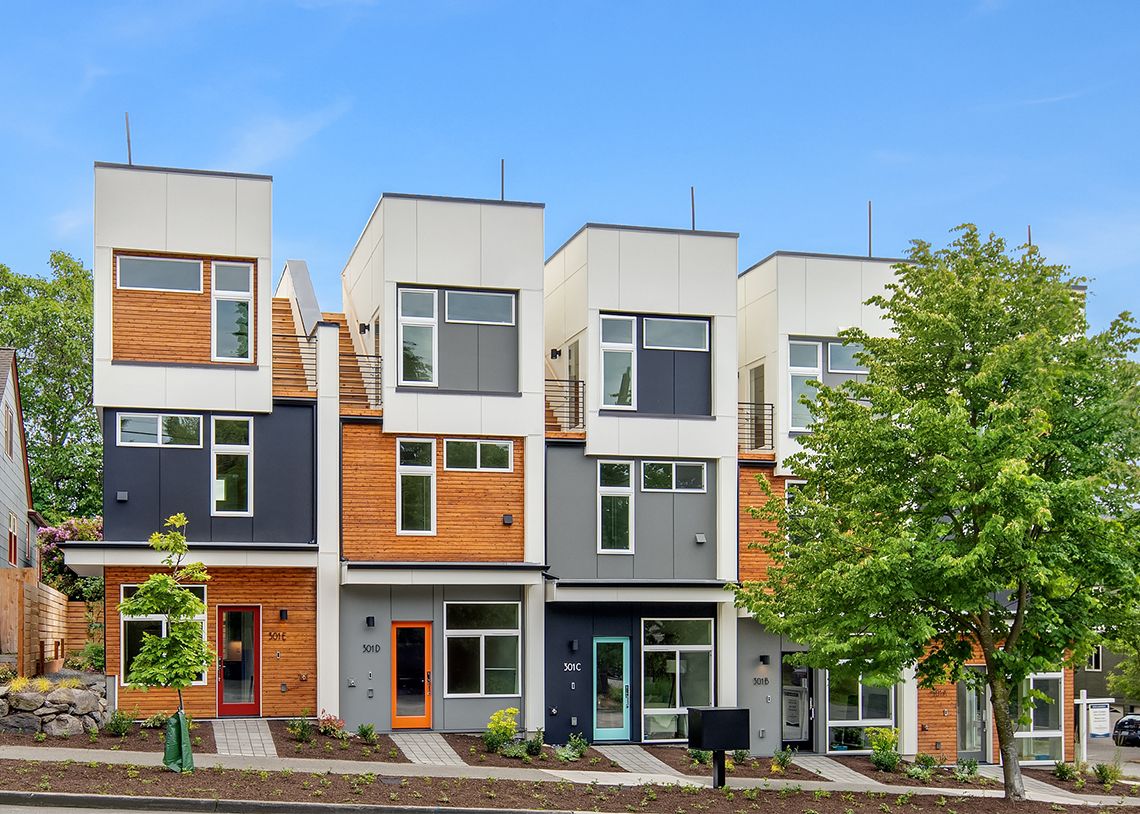With projects speckled throughout Seattle and expanding onto Bainbridge Island, Blackwood Builders Group has grown to influence more and more of the city’s urban fabric. Their Greenwood Ave. project, located at the juncture of Fremont, Ballard, and Phinney Ridge, provides rooftop views of some of Seattle’s most iconic scenery, namely the Olympic mountains, the Puget Sound, and the downtown skyline.
Where a single-family residence once sat, a five-unit rowhouse now helps maintain urban density. The project is reminiscent of an East Coast urban townhome with a modern, West Coast twist. The building mass is pushed up against the street, allowing for connectivity to the bustling neighborhood, as well as a quiet backyard and private community gathering space at the back of the lot. Although each unit has the same layout, the façade offers aesthetic individuality, with varying materiality and colors at each floor level.
Vital Stats
|
Section
|
Points
|
Location: Seattle
Star Level: 4-Star
Checklist: Single-Family/Townhome
Verifier: Evergreen Certified |
Site and Water |
138 |
| Energy Efficiency |
87 |
| Health and Indoor Air Quality |
105 |
| Material Efficiency |
80 |
| |
Total Score |
499 |
Blackwood’s consideration for aesthetics continues inside the building as well. Many of the finish and appliance choices were chosen for their look, as well as their sustainability and energy-efficiency. Upon entering a unit, the first thing to notice is the bamboo-strand engineered flooring. Not only is the flooring GreenGuard Gold certified, but bamboo is a rapidly renewable resource, unlike timber hardwood flooring.

In each owner’s suite, Blackwood installed a ductless mini-split ceiling cassette instead of a bulky mini-split head, taking into consideration that many buyers do not like the bulky look of a standard ductless unit. The ceiling cassettes are able to maintain a high energy-efficiency level and create more space on the walls for residents to hang framed items. Many other materials throughout the units are locally sourced, manufactured, and milled, helping to reduce the carbon footprint for the project while also supporting businesses within the Pacific Northwest. The balance of maintaining aesthetics while still pushing sustainability makes this project stand out from traditional rowhouse projects.
In addition to the ductless mini-splits, this project utilized a high-efficiency gas tankless water heater, Energy Star appliances, low-flow plumbing fixtures, and high-efficacy lighting, to save over 30% more energy as compared to code. The combination of all these items put this project at nearly 500 points, showing the care for and consideration of the project team to reduce this new construction project’s impact on the environment.